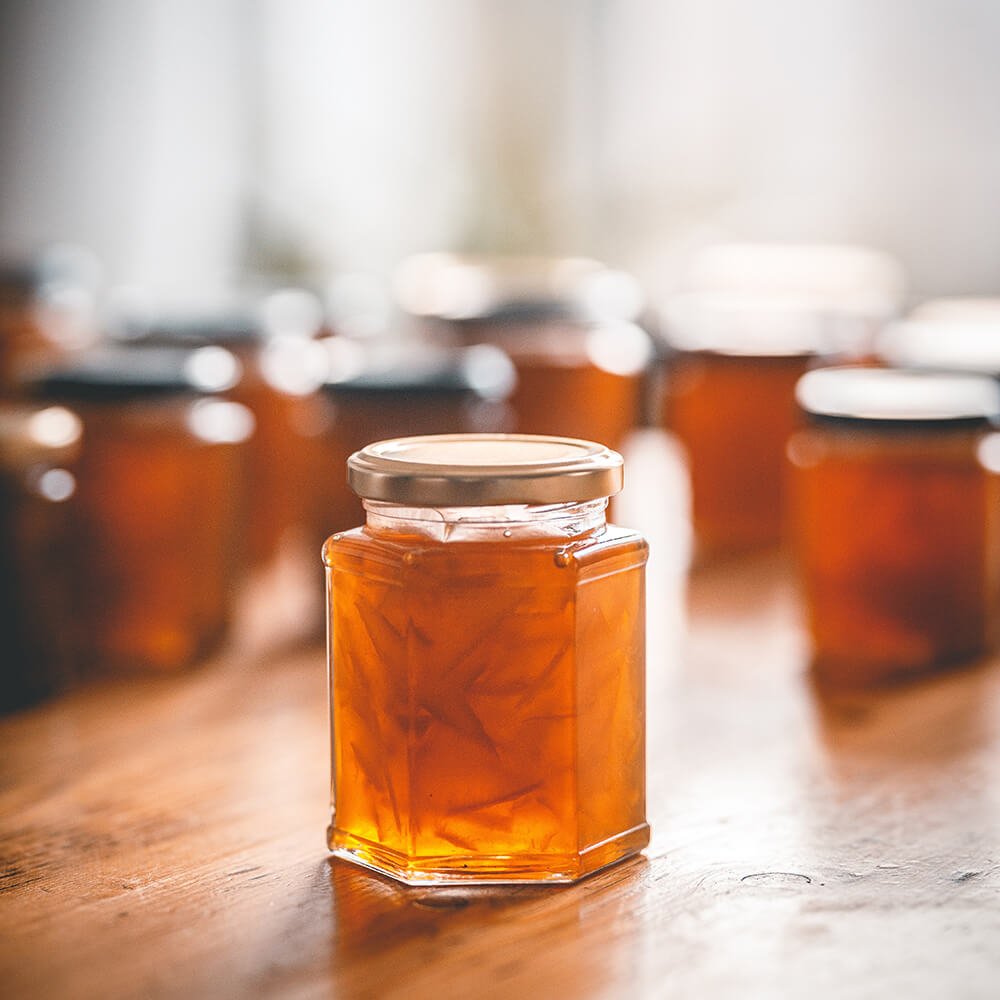When manufacturing pickle jars, it is crucial to understand the relevant processes and manufacturing techniques. Here’s a brief overview of the processing methods and important considerations to keep in mind.

Processing Techniques for Pickle Jars
- Raw Material Preparation: Typically, pickle jars are made from glass, specifically using non-crystal, carbon-free raw materials. Common materials include quartz sand and boron sand, along with boric acid, barite powder, barium carbonate, dolomite, and ammonium bicarbonate. Small amounts of auxiliary materials are also added during production.
- Batch Preparation and Melting: The raw materials are mixed to create a batch for melting. This batch is then heated at high temperatures in a furnace, ensuring a uniform, bubble-free liquid glass that meets forming requirements. The heat treatment process usually involves quenching and thermal treatment, creating internal stresses or crystallization within the glass.
Considerations During Pickle Jar Processing
- Avoiding Cracks: Cracks are a common defect in glass bottles, often occurring at the neck, shoulder, or rim. Some cracks are only visible under specific lighting conditions, while others may appear on the body or bottom of the jar. Close monitoring during processing can help identify and mitigate these issues.
- Preventing Uneven Thickness: Uneven glass distribution can lead to variations in thickness. This often results from inconsistent temperatures during the glass drop process. Areas of higher temperature tend to have lower viscosity, making them easier to blow thin, while cooler areas resist deformation, resulting in thicker sections. Ensuring uniform mold temperatures is essential to avoid these discrepancies.
- Avoiding Deformation: If the glass drop temperature and mold temperature are excessively high, jars may lose their shape after being removed from the mold. This can lead to sagging or deformation, and if the bottom of the jar is still soft, it may pick up patterns from the conveyor belt, resulting in an uneven base.

Conclusion
In summary, careful attention to the processing techniques and quality control measures is essential when manufacturing pickle jars. By focusing on the raw materials, ensuring uniform heating and cooling, and monitoring for common defects, manufacturers can produce high-quality jars that meet consumer expectations. Implementing these best practices will enhance the overall efficiency and effectiveness of the production process.

